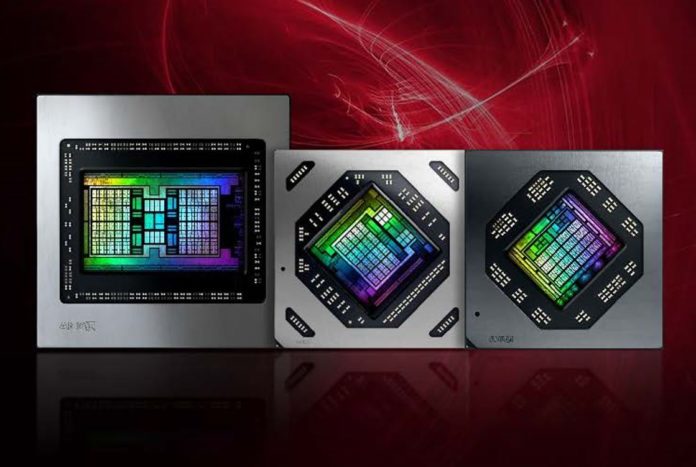Apparently, this one missed the publishing queue earlier this week and we did not notice given the volume of new content this week. At Hot Chips 33, AMD shared more about its RDNA 2 GPU architecture. For those wondering, indeed, the AMD Radeon RX 6900 XT, 6800 XT, and 6800 came out in 2020 and used RDNA 2. We even reviewed cards such as the AMD Radeon RX 6800 16GB and MSI AMD Radeon RX 6700 XT based on the architecture. Still, it is worth taking a look at what AMD presented.
AMD RDNA 2 Architecture at Hot Chips 33
AMD discussed how the RDNA 2 architecture was a big advancement. Specifically, its Infinity Cache is being used as a competitive differentiator.
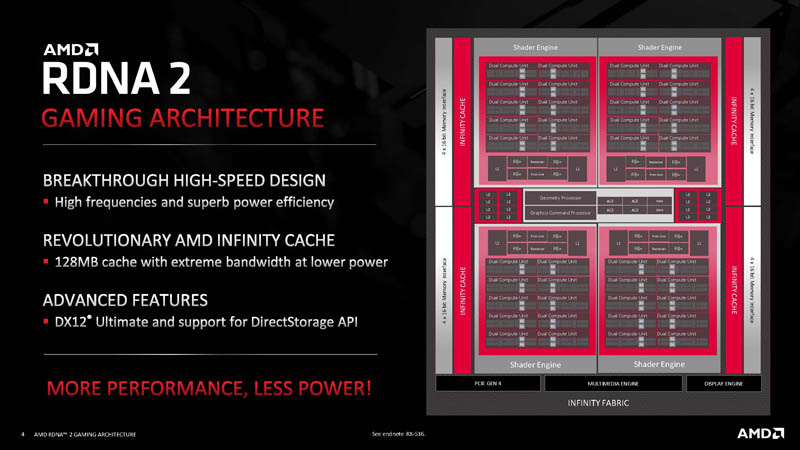
With the new generation, AMD was able to hit 30% higher frequency at the same power as the previous generation or 50% lower power at the same frequency. We will note here that AMD’s chart is from 1300MHz to 2700MHz on the Y-axis not starting from 0 which makes these deltas appear much larger than they are.
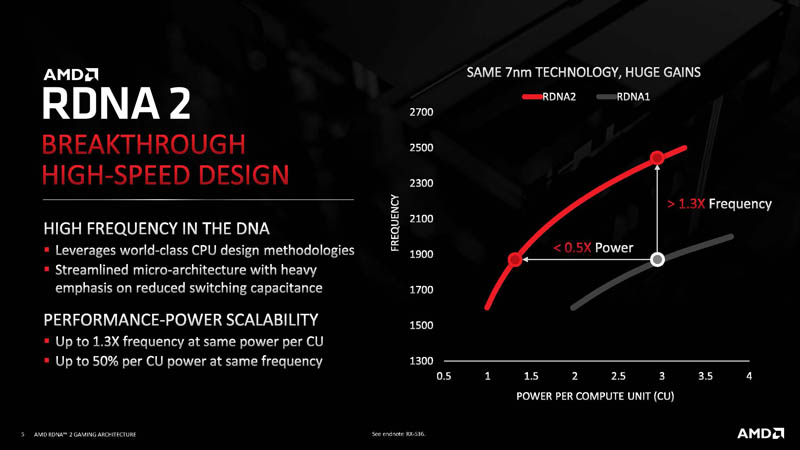
The previous generation in the Radeon RX 5000 did not have Infinity Cache and hit relatively lower cache hit rates.
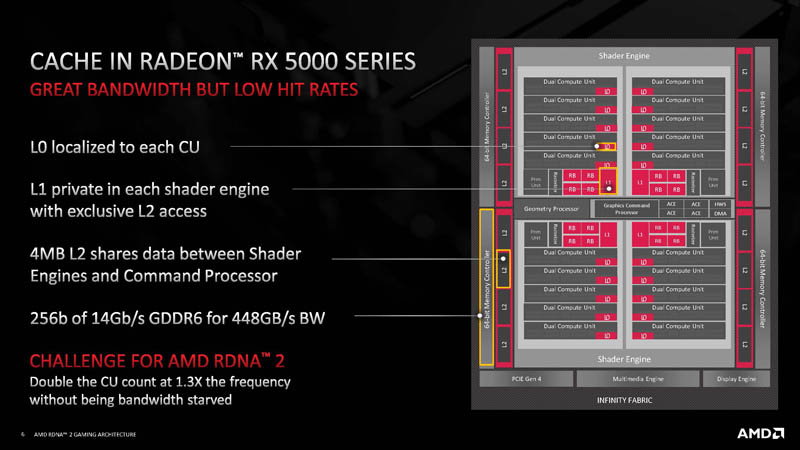
These days, bandwidth is a big driver of overall GPU performance. In these highly parallel GPU architectures, one of the biggest challenges is keeping all of the execution pipelines primed with data so they are not sitting idle. AMD basically looked at how frame data would result in a cache hit and therefore providing more bandwidth. Something to note here is that 128MB is on a severely diminishing return side over 64MB for 1080p gaming. For 1440p it showed more benefit. For 4K the additional capacity was generating solid returns and it appears as though with 4K even larger caches would help. That extra cost would not help much at lower resolutions so that is likely why 128MB was chosen.
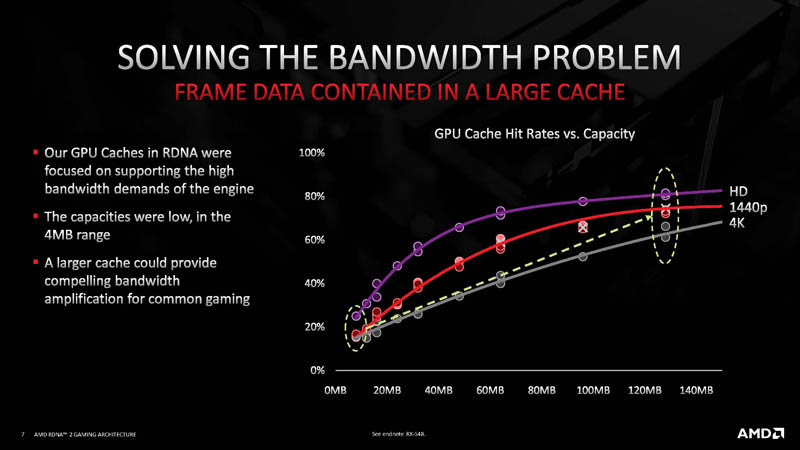
AMD said that they now added a 128MB Infinity Cache to the hierarchy between the 4MB L2 cache and the GDDR6 memory. Something interesting that AMD said is that this cache was inspired by the SRAM that is on the AMD EPYC CPUs. So it seems like RDNA 2 is infused with a little bit of EPYC DNA as well. EPYC had a more efficient and large SRAM cache which is why that became a useful option to bring over to the RDNA 2 design.
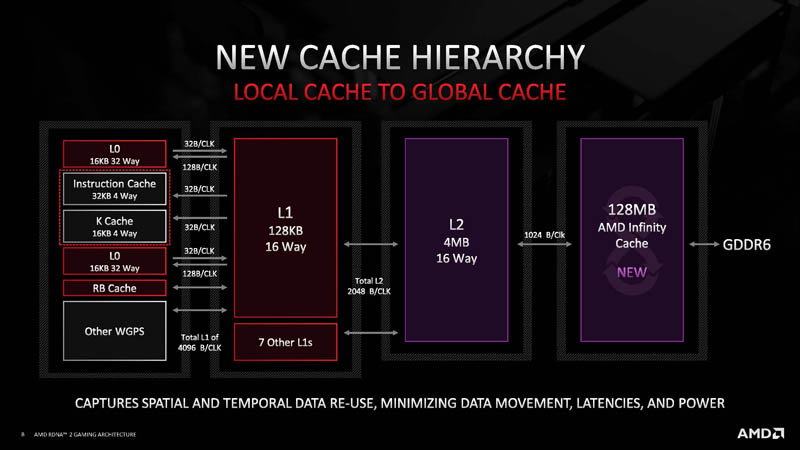
By having a larger cache, AMD minimizes the number of trips to GDDR6 memory. Those trips are physically further and off-chip so they use more power and have higher latency. As a result, the larger L3 cache means the architecture is feeding the compute units more efficiently.
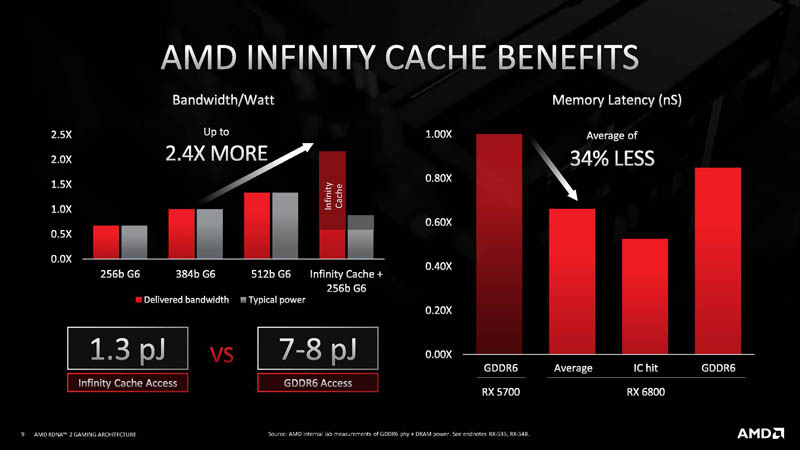
AMD is saying this is how they achieved the performance per watt gain that appears to be at the same sub 1900MHz frequency.
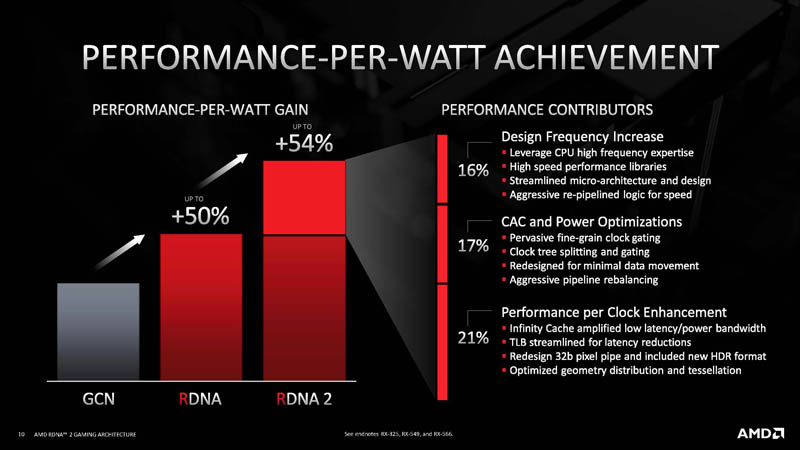
Aside from the cache, the other key feature that AMD focused on was some of its enhanced visual features for DX12.
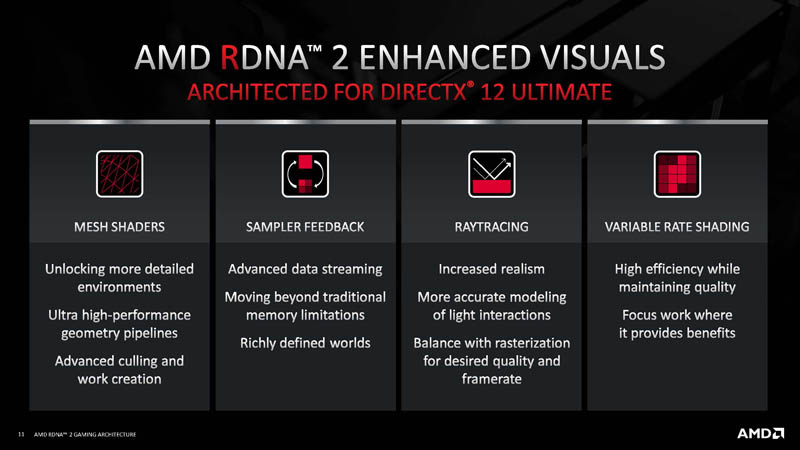
AMD has its answer for ray tracing. NVIDIA really started this trend and Intel is joining as well as its Xe line ramps, now called Intel Arc.
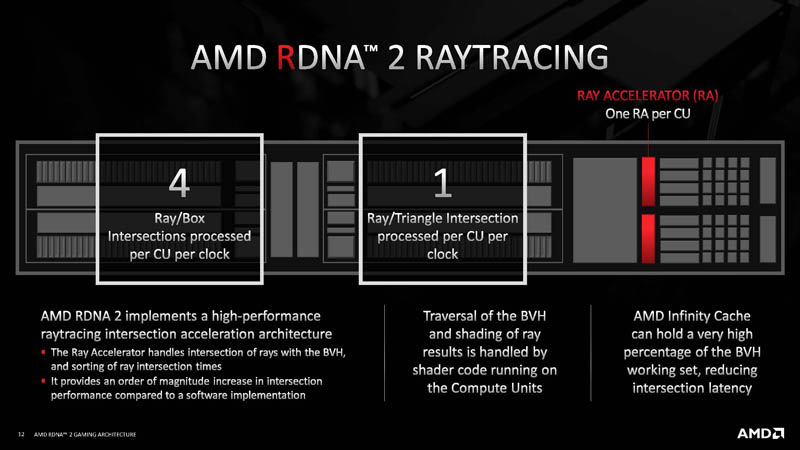
AMD also has variable-rate shading that changes the performance/ quality trade-off equation.
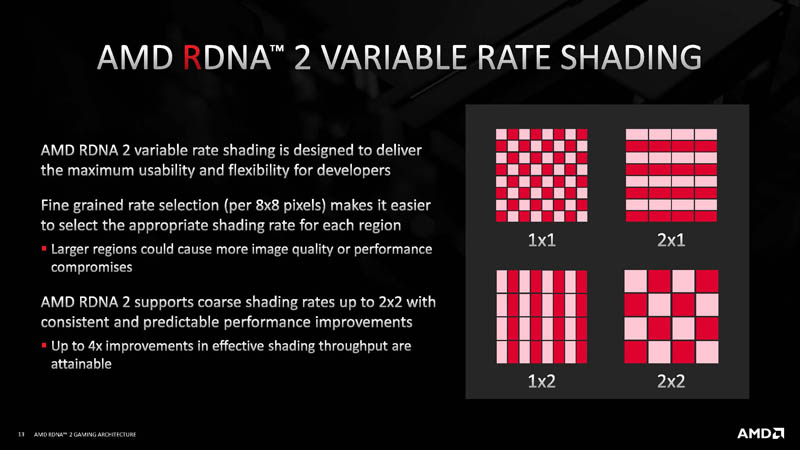
In terms of RDNA 2 variants, AMD has a number of models. We will just quickly note that it appears as though all of these models have game clocks listed on the slide that are not in the 50-54% power efficiency gains highlighted earlier in the presentation. This is labeled, but just something to be mindful of as the shipping clocks may not be in that efficiency zone.
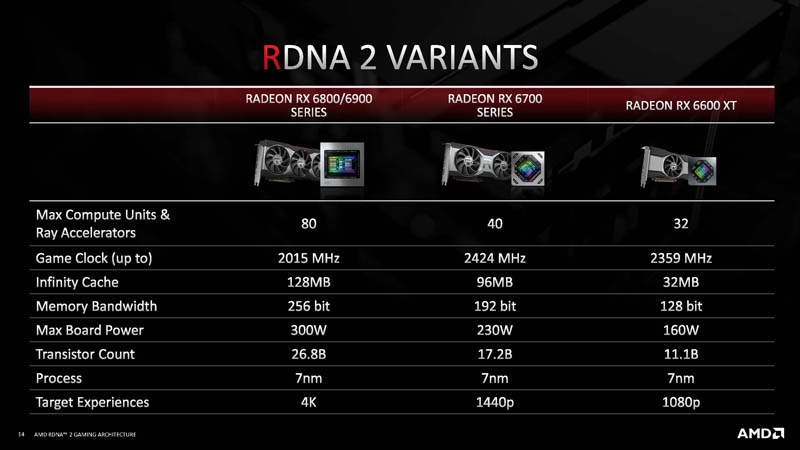
That was the sum of the talk just saying how the GPUs aligned to 4K, 1440p, and 1080p experiences.
Final Words
Overall, this is not something that should surprise most STH readers. RDNA 2 has been out for some time. It was a nice talk, but we would have preferred it if AMD had gone into new technology and future technology rather than focusing on something that has been shipping in some sort of volume (albeit often not enough) for many quarters.

